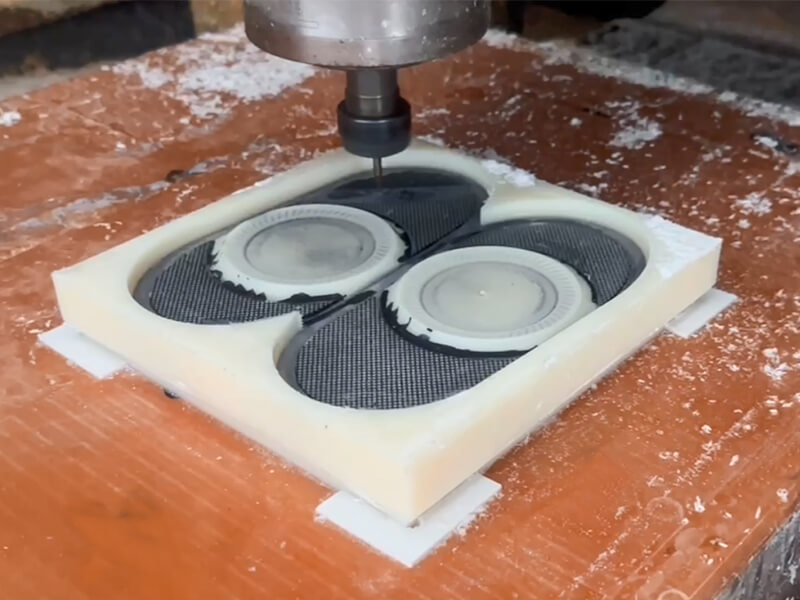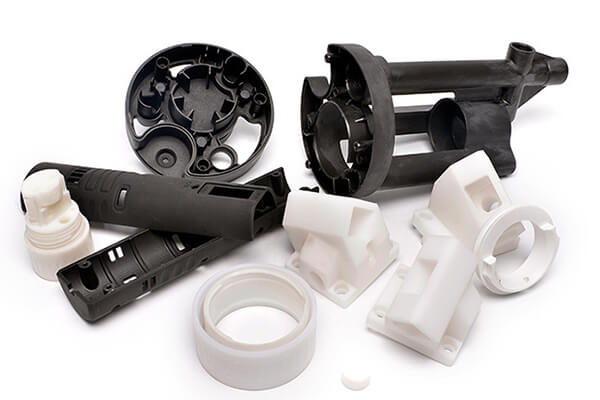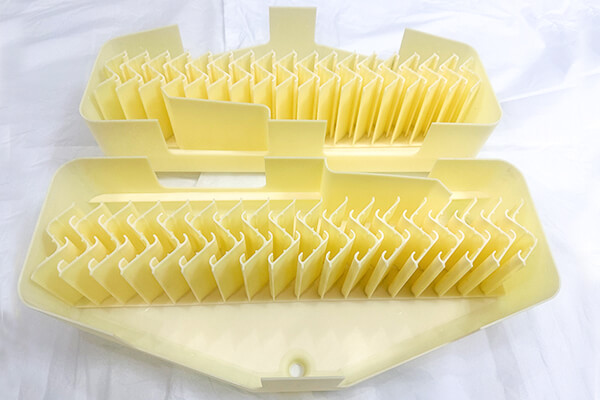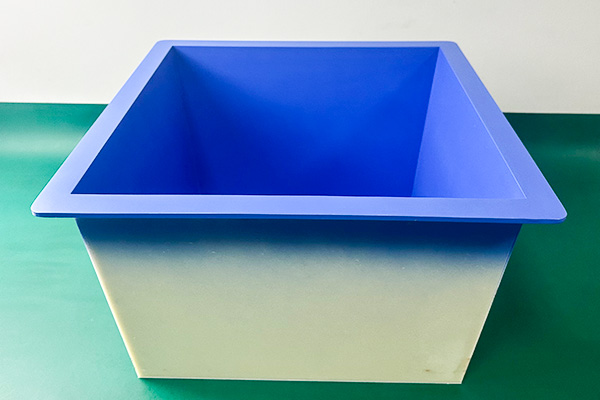CNC Prototyping: Good Idea for Custom Plastic Prototypes
We’ll introduce the idea of CNC prototyping machining in this article. It will outline the benefits and drawbacks of the procedure and explain why it is required. Additionally, some advice on creating CAD for CNC prototyping machining will be covered.

The Essential Role of CNC Prototyping Machining
CNC prototyping machining is a vital step in industrial manufacturing, given its operational benefits. This process helps eliminate potential threats or flaws that could disrupt manufacturing, thereby reducing the likelihood of producing substandard products. CNC prototyping machining facilitates the early identification and correction of issues, streamlining the manufacturing process and saving valuable time.

Why Opt for CNC Machining in Prototype Development
While CNC machining is commonly associated with large-scale manufacturing, its versatility extends far beyond that realm, notably in the creation of prototypes. Understanding the merits and drawbacks of CNC machining is crucial to appreciating why it is a preferred choice for prototyping. Here, we explore the advantages and disadvantages of utilizing CNC machining for prototypes.
Pros of CNC Prototyping Machining
These advantages position CNC machining as a reliable and effective method for creating prototypes with high-quality outcomes.
- Precision and Tolerance
CNC machining stands out for its precision and tolerance levels. By inputting size and shape specifications into a CAD file, this manufacturing process yields results with minimal true value deviation. The precision offered by CNC machining surpasses that of alternative prototyping methods. - Repeatability
The software-controlled nature of CNC machining ensures consistent dimensions across multiple results. Once the software is programmed with specific dimensions, the ability to manufacture numerous identical products becomes feasible, promoting repeatability. - Reduced Human Involvement
CNC machining minimizes the role of human intervention in the manufacturing process, reducing the likelihood of errors caused by operators. This automation also mitigates mistakes that may occur during production, enhancing overall efficiency. - Time-Saving
The efficiency of CNC machining results in a swift manufacturing process, a crucial aspect when creating prototypes. The rapid production allows for timely adjustments to designs and facilitates the quick evaluation of required properties. - Support for Various Materials
CNC prototype machining stands out for its compatibility with a wide range of materials. This flexibility makes it an ideal choice for prototype development, accommodating diverse material requirements based on specific project needs.
Cons of CNC Prototyping Machining
While CNC machining offers numerous advantages, it is essential to acknowledge its limitations. Here are some of the drawbacks associated with CNC prototyping machining:
- Higher Costs
In comparison to alternatives such as 3D printing and various manufacturing processes, CNC prototyping machining tends to be more expensive. Particularly for prototypes requiring substantial materials, the associated costs can be significant. The machine also demands higher power consumption compared to 3D printers, influencing the overall expense. If tight cost control is a priority and precision tolerance is not paramount, alternative prototyping methods like 3D printing may be considered. - Technical Expertise Required
Proficiency in technical skills is imperative for operating CNC machining. Engineers with a comprehensive understanding of the machine’s operation are essential. Since the machine is controlled by software, expertise is required in configuring and instructing the machine to achieve the desired results. - Material Wastage
Achieving a precise prototype through CNC machining often involves a substantial amount of materials. As the process is subtractive, material wastage occurs in the form of kerf and subtracted materials. This aspect of wastage can be a consideration in both cost and sustainability analyses.
While CNC machining is a powerful tool for prototyping, addressing these limitations by carefully weighing costs, investing in technical expertise, and considering material efficiency is crucial for successful implementation in the prototyping process.
Guidelines for Crafting CAD Designs for Prototype CNC Machining
Prior to commencing product manufacturing, producers often create visual representations of their intended product design. To optimize the precision, speed, and cost-effectiveness of CNC prototyping machining, consider the following tips when designing CAD files for your prototypes:
- Select a Robust CAD Software
Opt for a reliable CAD software that balances ease of use with technical capability. This choice significantly influences your ability to specify the shape, volume, and size of the prototype accurately. Well-regarded CAD software options include AutoCAD, CATIA, SolidWorks, and Civil 3D. - Create a Design Checklist
Before delving into the design process, establish a comprehensive checklist outlining the essential elements you want to incorporate into your prototype. A checklist serves as a guide, minimizing the likelihood of errors during the design phase for CNC machined parts. - Keep Your Drawing Simple
Represent the material features in your design using easily understandable elements such as figures, symbols, and images. Simplifying your drawing enhances clarity and comprehension during the design phase, avoiding unnecessary complexity. - Evaluate Design Quality
Once the design is complete, perform a thorough quality check by comparing it against the features outlined in your checklist. Look for any omissions or additions, and make necessary adjustments before finalizing the design. This meticulous review ensures that your design aligns precisely with your intended specifications.
By adhering to these tips, you can enhance the efficiency and effectiveness of the CNC prototyping machining process, resulting in accurate and cost-effective production of your desired prototypes.
CNC Prototyping Machining Services
Is it bothering you that it takes so long to receive your prototype? Or throw that away; would you rather use CNC machining to create the best prototype? If so, we firmly advocate for quantity and quality at the appropriate moment.
You can simply access our DfM analysis, regardless of size. Choosing us will yield a high return on investment, regardless of the kind of prototypes you wish to create. With that said, we can state with pride that your internet speed stands between you and your quotation.
We consistently give our clients the best, as seen by the high caliber of work we produce. Technical components are not just our specialty. You still have access to highly skilled individuals who are proficient in CNC machining overall and CNC prototyping machining in particular. You can have all of the aforementioned features for a lower cost.
Recall that Sungplastic is the trustworthy company when you need the best CNC prototyping machining service. Contact us without hesitate!


FAQ
What is CNC machining?
CNC machining is a subtractive process where multiple products are manufactured by various machines under the control of a computer. CNC, or computer numerical control machining, is widely used in custom production and rapid prototyping. The manufacturing process is widely used due to its automation, accuracy, and precision.
Is it possible to develop prototypes using CNC machining?
One of the best methods for making prototype parts, if not the best method, is CNC machining. It has a lot of benefits. For instance, errors can be easily found prior to real-time production. Continue reading the article to learn more about the additional advantages of prototype CNC machining.
What materials go into making CNC prototypes?
Materials for CNC prototypes are widely available. Technically speaking, materials that can be machined with a CNC are also perfect for the procedure. Materials like copper, titanium, brass, PA, aluminum, bronze, stainless steel, etc. are frequently machined using CNC technology.
Get a free quote and design analysis today.
We’ll reply to you within 6 working hours.
We respect your privacy.
+86 139 2927 4777 (WhatsApp, Wechat)
